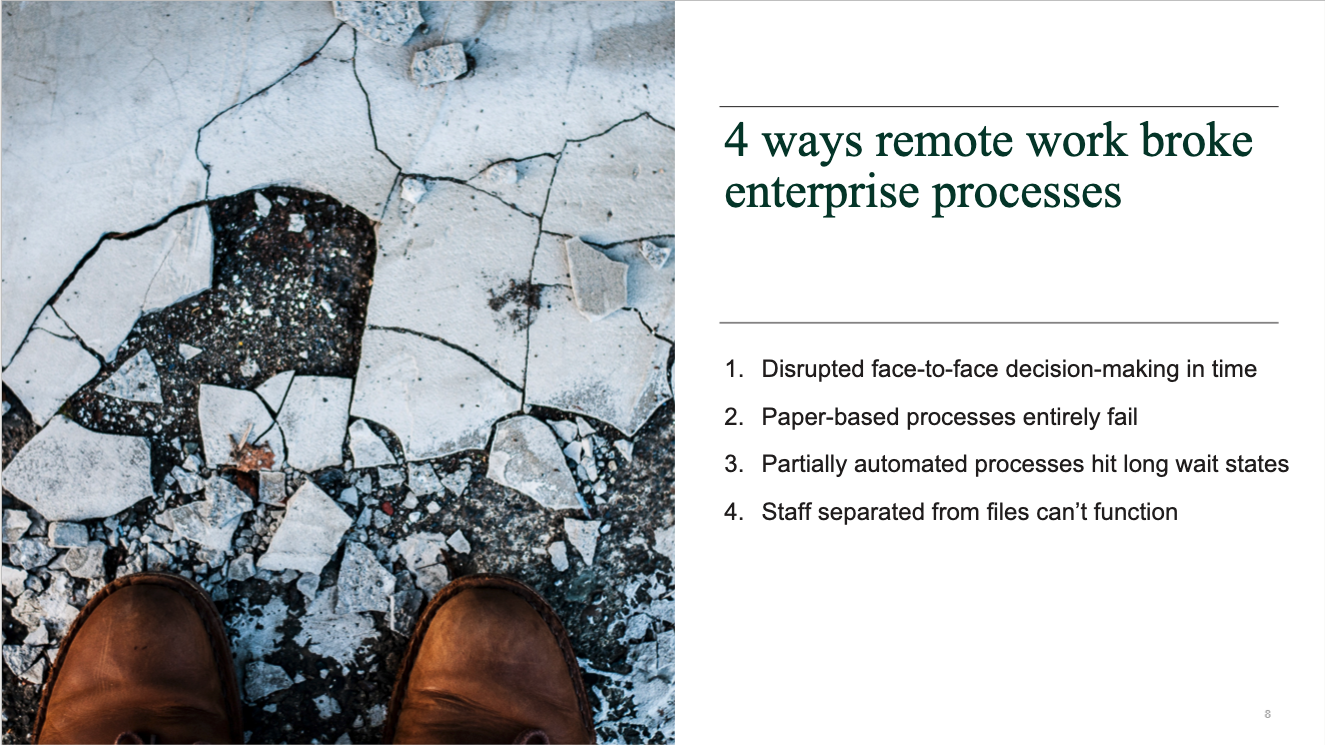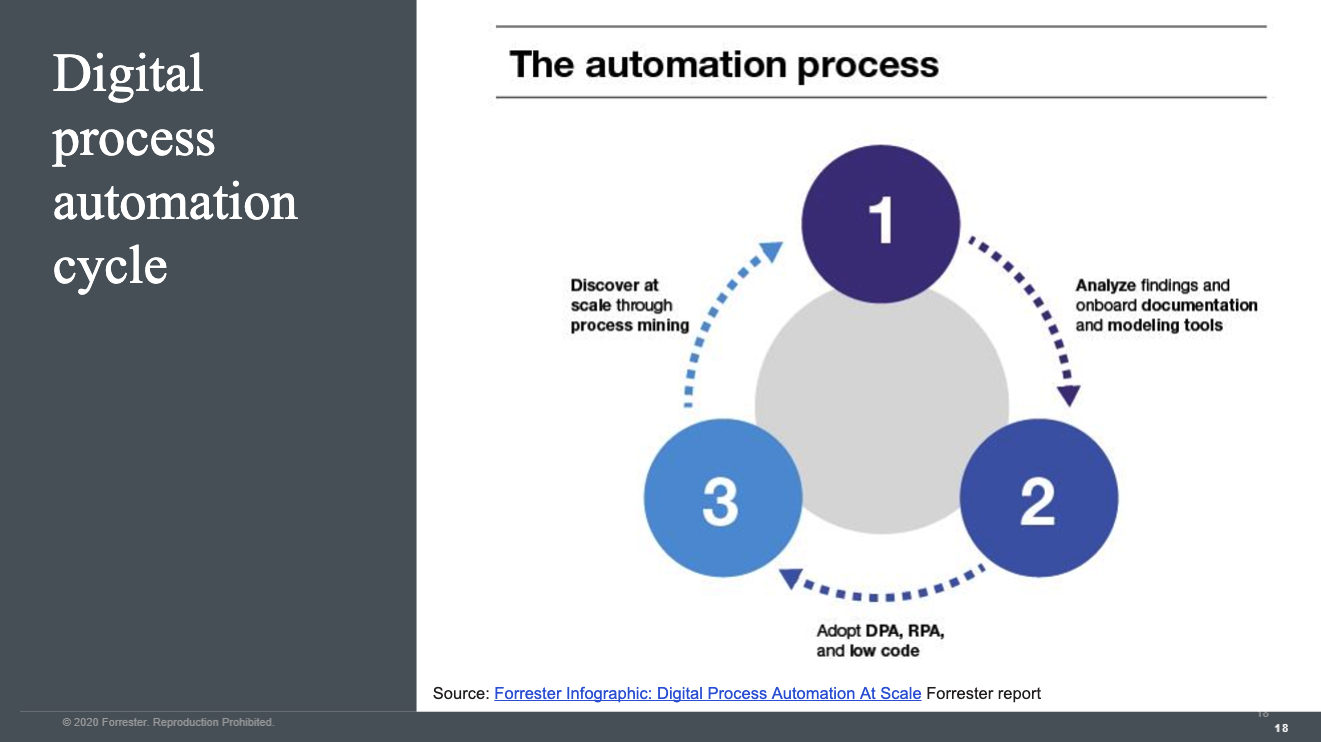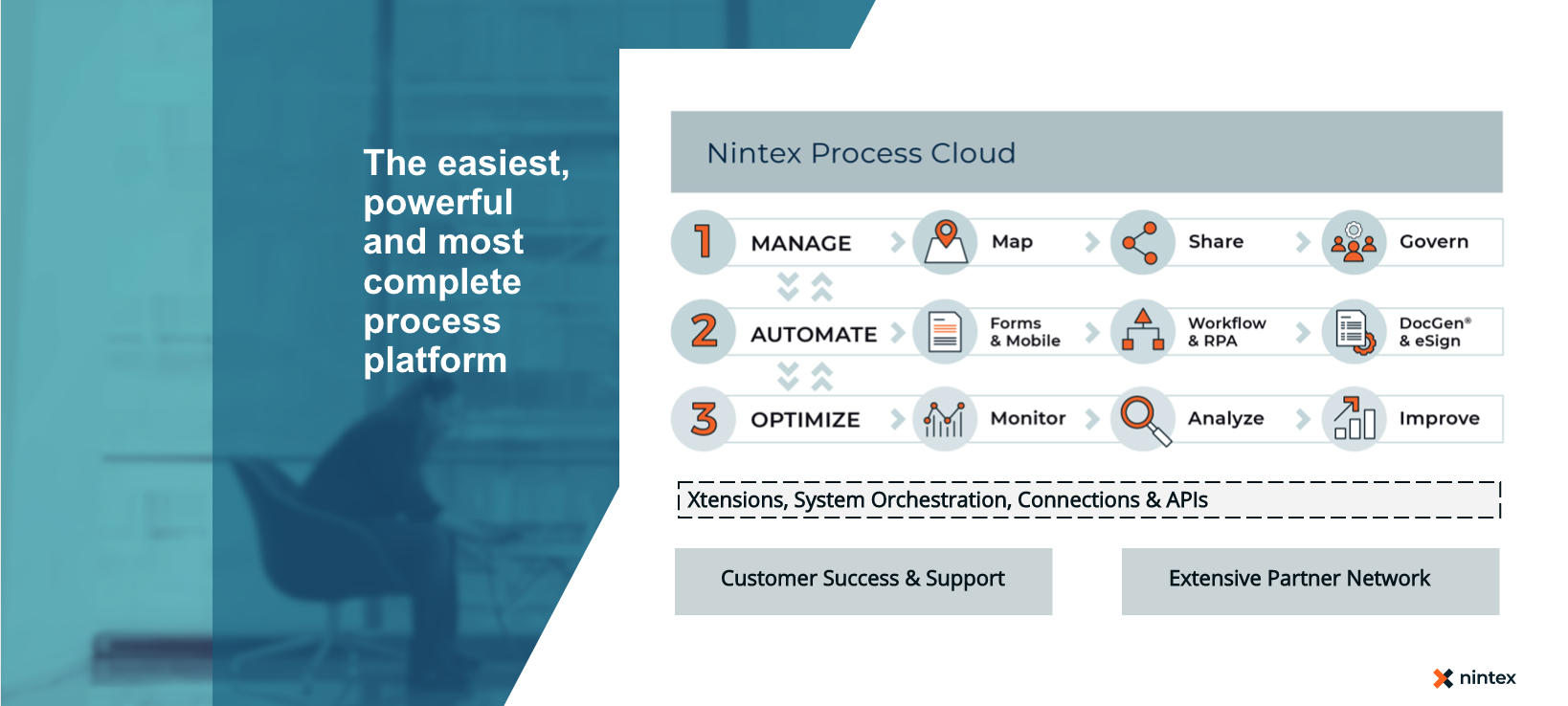Efficient processes and rapid automation have become more vital than ever to maintain the speed of business in the wake of COVID-19. Nintex Marketing Manager, Elise Harrington, recently hosted a webinar focused on how to Do more with less to help organizations maneuver broken processes and maximize resources.
The webcast featured a panel including Forrester Research VP Principal Analyst, Rob Koplowitz, and Nationwide SharePoint Information Architect, Ted Williams, who discussed current market insights and how to empower citizen developers with no to low-code software within your organization.
Take a deeper dive with our featured guests in this webcast including a live Q&A, now available on-demand.
Insights on the current automation climate

It would be safe to say most businesses are re-evaluating their process strategies. With every resource under the microscope, Forrester’s Rob Koplowitz joined us with insight on the rise and importance of rapid automation and no to low-code software.
Koplowitz examined the 2020 COVID-19 response as a forcing mechanism that expedited timelines most businesses had in place for implementing or improving their digital transformation. In almost every way, the COVID-19 crisis highlighted where companies were – or were not – agile in their process and automation strategy.
In their findings, Forrester sites that 76% of polled businesses are still relying on paper processes going into the COVID-19 timeline – which simply failed in the transition to remote work. Other roadblocks are as simple as access to internal files – “staff separated from files can’t function,” Koplowitz shared.
Forrester’s predictions for the new normal
Koplowitz emphasized the point that we should expect a new normal on the other side of this COVID-19 response. Also, 70% of businesses are still focusing on cost reduction as the primary goal in their digital transformation journey – and demanding the need for no to low-code resources like the Nintex Process Platform in their portfolio.
In addition to this, he predicted fewer software developers will be available over time. Therefore, a need to create accessible ways to automate at the scale we need.
This drives the demand for a suite of process automation tools to crowdsource a “DIY” process management mindset and establish internal citizen developers.
In the live Q&A, Koplowitz predicted further demand for intelligent automation through DPA, RPA, and no-code software functioning as process management AI with their conditional logic and decision-making capabilities.
A virtuous cycle of optimization

Koplowitz encouraged organizations to re-examine goals around process strategy, and to equip themselves with a process improvement mindset to establish a “virtuous cycle” of adoption, automation, and discovery:
Manage
Through mapping and documentation, organizations can identify broken processes ripe for re-engineering and automating. Using tools like Nintex Promapp® to create a collaborative, centralized location for process experts and tech experts to come together to model and document processes.
Automate
Automate processes with rapid-development tools like Nintex Workflow and RPA that utilize no-code/low-code software allowing businesses to automate to scale at faster rates than ever before.
Optimize
Create a continuous mode of discovery using analytics to optimize processes and increase speed of business, while highlighting other areas that are rich for improvement.
Recommendations for speed of business
Leaving us with a few mindful takeaways, Koplowitz said we should assume that rapid and agile automation is the new normal. This should not be solely a crisis response, but the new speed of business.
To achieve this, he recommended taking a holistic approach to automation by forming process optimization as a core strength within the organization. In adopting this, and a cycle of process excellence, an organization can quickly automate processes, remove reliance on paper procedures, improve decision-making timelines, and increase process governance.
Underneath all this, Koplowitz emphasized the importance that it is now everyone’s job to drive process management.
Nationwide’s Approach using Workflow Automation, A Center of Excellence
A great example of this is how Nationwide adopted a process management mindset within the organization, creating an internal force of workflow automation experts and citizen developers.
When they started their journey on the Nintex Process Platform, Williams encountered several typical roadblocks weighing down processes – like workflows being routed to too many stakeholders and slow decision making.
For the initial adoption and ongoing use, Williams created an internal site featuring a common knowledge base and an internal support reference. The site also included information on training requirements and governance documents, including their methodology for support within the organization.
This helped Williams create a hands-on support model and an environment of internal empowerment to automate processes, including workflows and forms. Williams stated that instead of reaching out to IT for help, they encourage users to “ask a neighbor.”
Williams established governance rules to uphold their standards for process optimization including required training to provide consistent baseline knowledge. They also ask users to develop an estimate of the cost of the current process to measure ROI on the Nintex Platform and to fill out an online application utilizing a Nintex Form with checklist features.
Through internal marketing and creation of an internal support network, Williams estimated that roughly a third of the company has adopted the Nintex Process Platform. With more than 1,600 published workflows and 215 certified workflow experts, Nationwide is continuously optimizing.
Rapid automation on the Nintex Process Platform

Expectations to adapt and thrive are higher than ever before.
Organizations are doing this on the Nintex Process Platform by utilizing a comprehensive suite of tools including process mapping, eliminating paper with customizable lightning-fast forms, advanced workflows, robotic process automation (RPA), and a steady cycle of optimization through analytics.
If you are looking for workflow and process improvements in your organization, request a demo to see how Nintex can transform the way you work with no-code/low-code automation including capabilities for workflow automation, RPA, and more.







